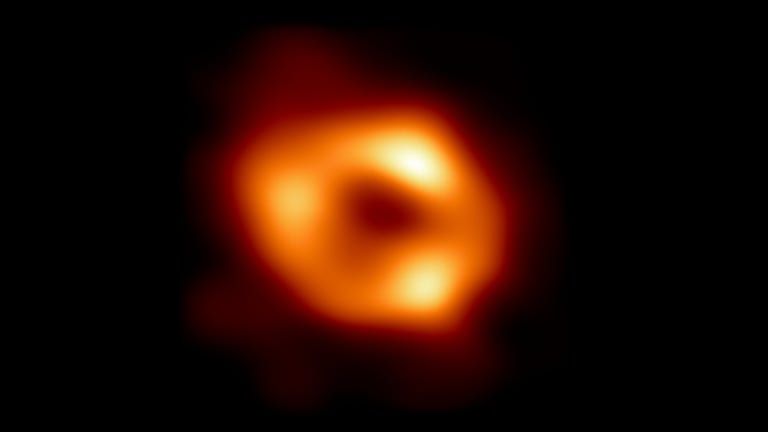Blake Crouch is not a scientist, but that didn’t stop him from including real scientific theories in his best-selling novel. dark matter and Apple TV Plus Science fiction thriller based on it. One theory that really stuck with him was that of alternative universes.
Dark Matter was originally published in 2016.
Blake bends down
“I was very excited by the idea of multiple realities and even more excited by the science behind them,” Crouch told me in an interview. “YO [thought] “It would be great to write a novel about quantum physics.”
Crouch said he did not take any science or math courses in college. So, to incorporate quantum physics into the book and the program, he worked with Clifford Johnson, a physics professor at the University of California, Santa Barbara. I spoke with Johnson about the physics behind fiction.
“It’s really a compelling story about the decisions we make in our lives,” Johnson said. “It is a real pleasure to see so much science from the beginning, and that is why I helped [Crouch] Develop many of the ideas.”
The main theory that Dark Matter explores is that of the multiverse: the theory that there are infinite universes beyond our own. To explore this theory, the show uses an interdimensional travel device called “the box.”
The box is a heavy contraption that may not be as visually appealing as similar devices in other works of science fiction, such as Back to the Future’s DeLorean or Doctor Who’s Tardis, but there are real theories behind how it could work. Who knows, maybe these theories will lead to breakthroughs in the world of physics, or maybe they already have in another universe.
Read more: Apple TV added these award-winning films in March
How does the box work in Dark Matter?
The Dark Matter box is an example of an interdimensional travel device. According to TV Tropes, these types of devices allow a person or group of people to travel to another universe. That journey begins with the box.
In Dark Matter, the characters enter the box, which blocks everything coming from the outside, and take a mind-altering drug. Our characters then imagine the reality they want before stepping out of the box into a different universe. Johnson explained that the box is a way to visualize all possible outcomes for a superimposed quantum state.
Ok, explain it to me like I’m 5 years old, please.
It’s not a DeLorean, but the box will still take you to another universe.
Apple
An easier way to understand this, and superposed quantum states, is through the famous Schrödinger’s cat thought experiment.
The essence of the experiment is to put a cat in a sealed box that cannot be seen, along with something that can kill it, such as poison or radioactive material. Then, since you can’t interact with what’s inside the box or see if the object in the box killed the cat or not, you can’t observe whether the cat is dead or alive at any given time. Therefore, the cat is both things at the same time: it is in a superposition of life and death. Only after you have opened the box and observed the cat will you be able to report on its condition.
Johnson said the cat in the experiment has two possible outcomes: dead or alive, but when a person enters the Dark Matter box, they have many outcomes they can choose from. The Dark Matter box is, in essence, the opposite of Schrödinger’s cat. Instead of an observer being unable to see or interact with a small portion of reality, the observer cannot see or interact with anything outside of a small portion of reality (the box).
So the way the Dark Matter box works is that a person goes into it, imagines the reality they want to be in with the help of a drug, and then steps out of the box into the reality they constructed with their mind. While the person is in the box, they are put into a state of superposition between all the different realities, and the one they focus on becomes real once they observe it as they step out of the box.
Could the box really work?
Maybe one day we will invent a device like the box.
Apple
Maybe, but we may never know. Some people have put forward theories about reality similar to those put forward in Dark Matter.
“The boys who won the Nobel Prize in Physics in [2022] “We’re talking about nonlocality and the idea that objective reality doesn’t exist,” Crouch said. “There is no independent reality that is simply out there without conscious, biocentric beings observing it.”
Others have said similar things. Roberto Lanza, associate professor at Wake Forest University School of Medicine, developed a theory of biocentrism that holds that consciousness is the driving force behind reality and the universe, and not the other way around.
“Nothing has existence unless you, I, or some living being perceive it,” Lanza wrote in the American Scholar in 2007. “The images you see are a construct of the brain. Everything you are experiencing right now… is actively being generated in your mind.”
The biggest obstacle to proving these theories is building a device like the box. Crouch and Johnson said designing the box was a challenge since they had to block everything (and I really mean everything) for one person to be overlapping.
“Things like temperature, anything above absolute zero,” Crouch said. “Or neutrinos flying through our atmosphere, constantly flying through our bodies… Variations in wind, temperature, all these things…”
Any changes to these variables would make the box simply a piece of metal, as those changes would act on the person inside the box, removing them from a superimposed state.
“We’ve never built anything like this and it’s not clear that we can actually do it,” Johnson said. “But it’s fun to imagine what that would be like if you could.”
Are there other ways to get to alternate universes if they exist?
If entering a superposition state to enter another reality seems too far away, perhaps a black hole can help. This may seem as fantastical as the Dark Matter box set, but renowned physicist Stephen Hawking considered the idea. Hawking theorized that a black hole could function as a passageway to another place, including another universe.
“They are not the eternal prisons that were once thought,” Hawking said in a 2008 lecture. “Things can leave a black hole, both outside and possibly into another universe. So if you feel like you’re in a black hole, don’t give up. “There is a way out.”
We don’t know for sure what would happen if a person fell into a black hole, but Gaurav Khanna, a physics professor at the University of Rhode Island, told me in an interview that a person could survive the encounter.

Sagittarius A*, the supermassive black hole at the center of the Milky Way.
EHT Collaboration
Khanna and a team of researchers found that if a person, or a spacecraft, fell into a supermassive black hole, like Gargantua in the movie Interstellar or Sagittarius A* in our own solar system, it could be a smooth and stable ride.
“While we don’t know what the other side of a black hole connects to,” Khanna said, “if we take a leap of faith and imagine that the other side of a black hole connects to another part of our universe, or maybe another dimension, then you could pass smoothly and without much discomfort, from one to the other.”
Khanna said a black hole must meet three criteria for it to function as a portal: it must be considered supermassive, it must be old and it must be rotating. If a black hole doesn’t meet those requirements, like if it’s too small, well…
“The small [the black hole]it will be worse,” Khanna said. “Even if you go into a black hole the size of our sun, I don’t think there is any hope of surviving.”
So we could travel to other universes with the right conditions?
“This is not a plan about how to travel to other worlds,” Crouch said. “This is a speculative idea that says, ‘Oh, if we had some things, some advances in certain areas of technology, then maybe we could start having a conversation about how macroscopic objects exist in a state of superposition.’”
If traveling to another universe by taking a person to a superposition state like in Dark Matter proves unreliable, a supermassive black hole could be the solution.
“The door is a little open,” Khanna said. “We have some understanding, experimentally, that this could actually work.”
You can stream Dark Matter now on Apple TV Plus ($10 a month). You can also check out how February was the warmest February on record and what to know about the Great Pacific Garbage Patch.

See this: A closer look at Apple’s AI: What we didn’t hear in the WWDC keynote
08:33









